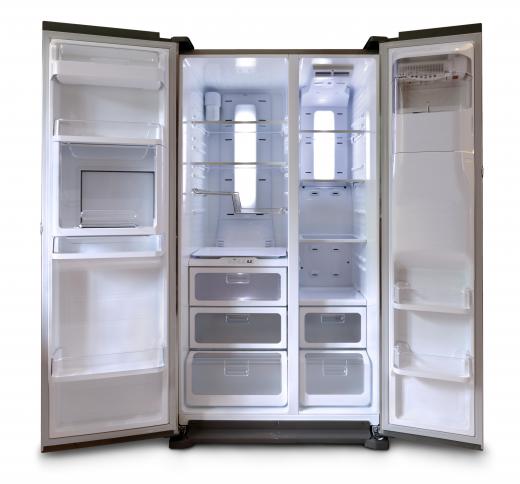The rate at which heat must be removed from a refrigerated space in order to maintain a desired temperature is known as refrigeration load. It is dependent on several factors, including the volume of the space being cooled and the quantity and base temperature of items inside. This number may also be referred to as cooling load or heating load.
The technology of refrigeration, or artificial cooling, is common in most modern homes. Most kitchens have refrigerators for food preservation. Many homes and businesses also have either central air conditioning units or in-window air conditioning units.

It is a basic law of physics that heat moves to cold, meaning that a warm object will attempt to heat anything around it. For example, when ice cubes are placed into a glass of warm water, the water in the glass does not turn to ice; instead, the ice in the glass melts. This happens because the molecules in the water want to achieve equilibrium with the molecules in the ice. The water heats the ice until all the contents of the glass reach a nearly uniform temperature.
Due to this physical law, refrigerating a space requires a continuous supply of cold air. In the past, refrigerators used ice as a cooling source. Modern refrigerators use evaporating liquid, generally liquid ammonia. Whatever the cold source, the problem is the same: that of how much heat must be taken away in order to keep the space cool enough to preserve the food inside.
Refrigeration load must be calculated in order to design an efficient refrigerator. The refrigeration load will vary depending on how much food is in the refrigerator and whether the food was warm or already cold when it was placed inside. Insulation will also affect the refrigeration load. Without insulation, external heat will act on the space inside, attempting to reach equilibrium.
Refrigeration load is often calculated to decide the size and kind of air conditioning unit needed for a space where people will be working or living. In this case, the heat exchanged through walls, floors, and windows must all be considered. Climate will play a role as well because humidity and air movement can affect temperature. The number of people expected to live and work in the room must also be estimated because living bodies produce heat. Large electronics like computers, washing machines, and televisions also make heat and should be accounted for when figuring refrigeration load.
